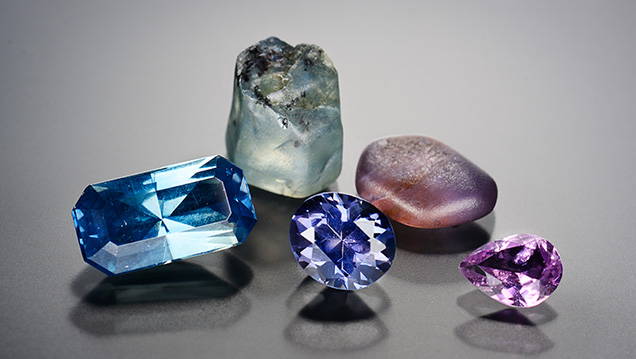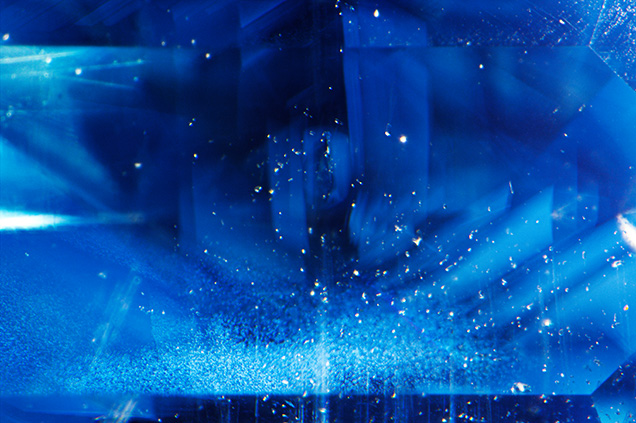Sapphires from Colombia

Colombian sapphires were first reported in G&G nearly 35 years ago and are still circulating in the market today (see P.C. Keller et al., “Sapphire from the Mercaderes–Río Mayo area, Cauca, Colombia,” Spring 1985 G&G, pp. 20–25). The deposit is located in southern Colombia in the Cauca Valley, in the small town of Mercaderes. This location is notorious for being politically unstable and dangerous. This deposit continues to produce in small quantities, with most material extracted from riverbeds using picks and shovels. Independent miners collect year-round and go to Bogotáto sell the material. Vanessa Van Horssen (Carlsbad, California) recently purchased several unheated Colombian sapphires and learned about the active mines from a third-generation miner in Bogotá. She loaned GIA’s Carlsbad laboratory five samples (figure 1) for scientific examination.
Colombian sapphires occur in a variety of colors, such as blue, pink, and violet, and there have been past reports of color-change sapphire from this deposit. The five samples consisted of a 0.41 ct pink faceted pear, a 0.92 ct color-change (blue to violet) faceted oval, a 1.66 ct pink rough, a 2.26 ct blue faceted octagon, and a 3.65 ct blue rough. All five had gemological characteristics consistent with corundum. They exhibited a refractive index of 1.762 to 1.770 and a specific gravity of around 4. Laser ablation–inductively coupled plasma–mass spectrometry (LA-ICP-MS) was performed to identify their chemical compositions. A high concentration of Fe ranging from 1515 to 1749 ppma suggested a magmatic source. Infrared spectroscopy showed no indications of treatment.

The internal features (figure 2) were color zoning, particle clouds, angular milky clouds, and twinning. The sapphires contained transparent colorless and red crystals that showed no sign of heat treatment. Using Raman spectroscopy, the inclusions were identified as unaltered zircon and rutile crystals, consistent with the inclusions reported in Keller et al. (1985). Sapphires transported to the surface by hot magma tend to show characteristics similar to those of artificially heated sapphires, such as tension fractures around crystals and altered fingerprints. The suite of inclusions in these high-temperature-formed sapphires confirmed that no heat treatment was performed.
These stones provided useful data for ongoing origin determination studies. Although Colombian sapphires are rare, they are on the market, and the deposit continues to show great promise.



